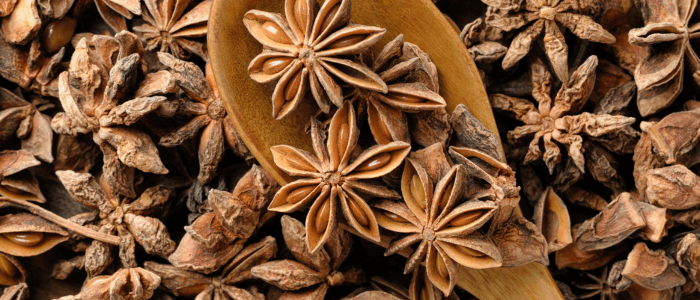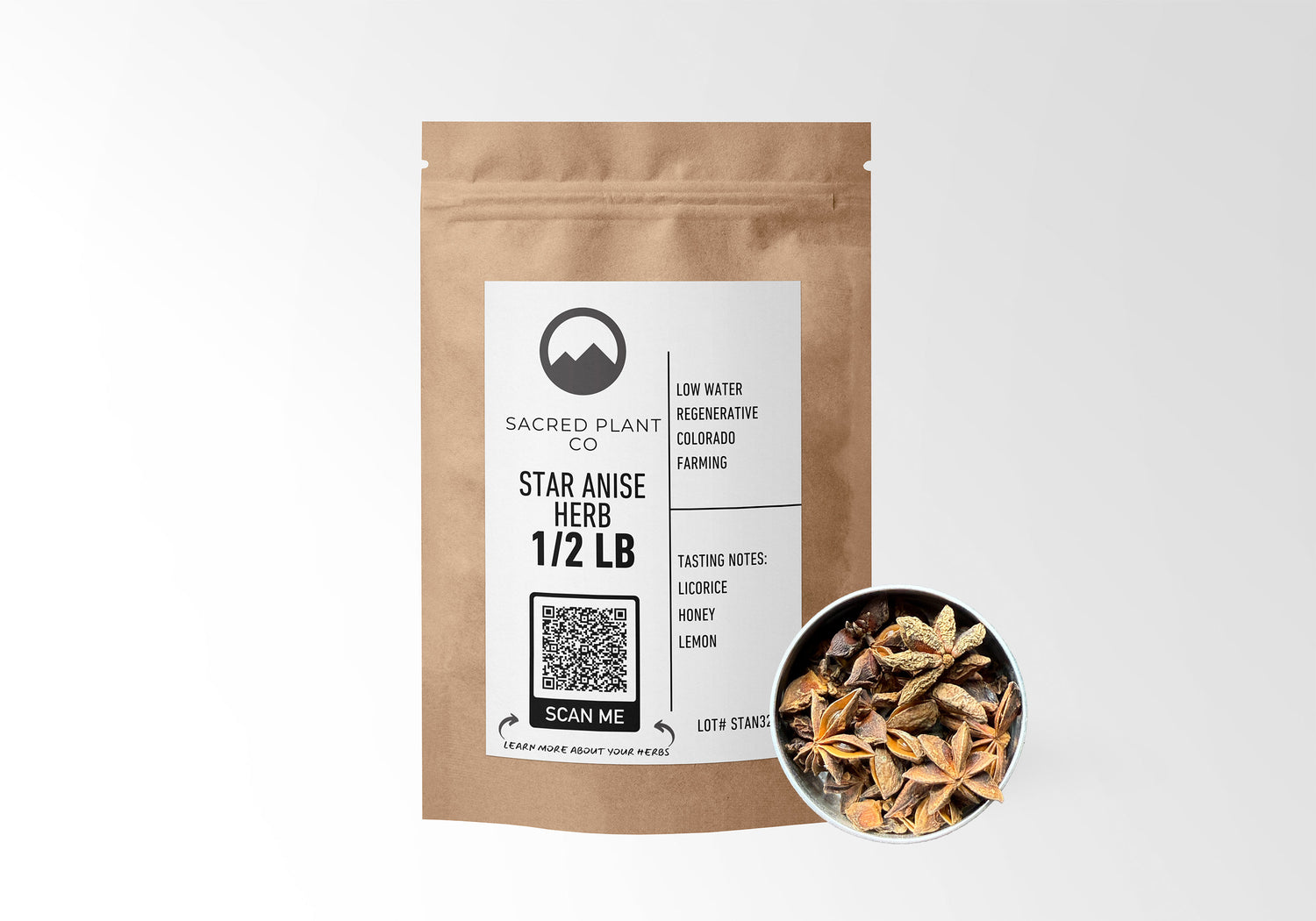Star Anise (Illicium verum): Origin, Uses, Flavor Pairings, and a Comforting Night Tea
Fast takeaway: Star anise is the star-shaped spice at the heart of pho and Chinese Five-Spice. Beyond the kitchen, it has a long history in traditional medicine and ritual. Below you’ll find a concise origin story, practical tips for buying and storing pods, a balanced tea recipe, and an FAQ that answers the most-searched questions.
Historical Significance and Cultural Importance

Star anise (Illicium verum) originated in the humid subtropics of China and Vietnam, where it has flavored broths, braises, and liqueurs for centuries. It anchors Chinese Five-Spice, perfumes Vietnamese phở, and lends its licorice-like sweetness to European drinks such as pastis and anisette. In traditional systems, the aromatic pods appear in warming teas, digestive formulas, and seasonal wellness blends. In ritual, their eight-pointed symmetry symbolizes clarity and good fortune.
Flavor, Quality, and Smart Buying Tips
- Signature profile: Sweet, warm, and spicy with licorice and cinnamon notes. A little goes a long way.
- Pods vs. powder: Buy intact pods for peak aroma and grind as needed; powder stales faster.
- Storage: Keep sealed, away from heat, light, and moisture. Whole pods retain flavor for many months.
- Important: Use culinary star anise (Illicium verum)—not Japanese star anise (Illicium anisatum), which is not for consumption.
The Starry Night Tea (Balanced, Aromatic, Not Overpowering)
This cup highlights star anise without letting it dominate. Green tea adds lift; peppermint cools and brightens.
Ingredients
- 1 star anise pod (Star Anise Pods — Sacred Plant Co)
- 1 tsp green tea leaves
- 1 tsp peppermint
- 8 oz freshly heated water
- Fresh lemon and honey to taste
Directions
- Prep: Lightly crack the pod to expose seeds (more aroma, faster extraction).
- Water: Heat to ~185–195°F (just below a boil) to protect green tea’s delicate notes.
- Steep: Add all ingredients, cover, and steep 4–5 minutes. Taste at 4 minutes and stop when balanced.
- Finish: Strain. Add a squeeze of lemon and a touch of honey if desired.
Why each step matters
- Cracking the pod releases essential oils without requiring long steeps that turn the cup overly licorice-heavy.
- Lower water temperature prevents green tea from becoming bitter while fully expressing star anise aromatics.
- Covered steep traps volatile compounds so they end up in your cup—not the air.
Educational note: The information here is for educational purposes and not medical advice. Consult your healthcare professional before using herbs in a wellness program, especially if pregnant, nursing, or on medication.
Star Anise FAQ
Is star anise the same as anise seed?
No. Star anise is the star-shaped fruit of Illicium verum (a magnolia relative). Anise seed comes from Pimpinella anisum (in the carrot family). They share similar licorice notes but differ in intensity and background spice.
How much star anise should I use?
Start with 1 pod for a teapot or ½ pod per mug, then adjust. For Five-Spice blends and braises, 1–2 pods typically season a pot.
Can I grind star anise?
Yes—grind just before use for maximum aroma. Use a spice grinder or mortar and pestle; sift out woody bits for ultra-fine powder.
Is Japanese star anise safe?
No. Only use culinary star anise (Illicium verum). Japanese star anise (Illicium anisatum) is not for consumption.
How do I store star anise so it stays fragrant?
Keep pods in an airtight container away from heat, light, and moisture. Whole pods keep their punch much longer than pre-ground powder.






